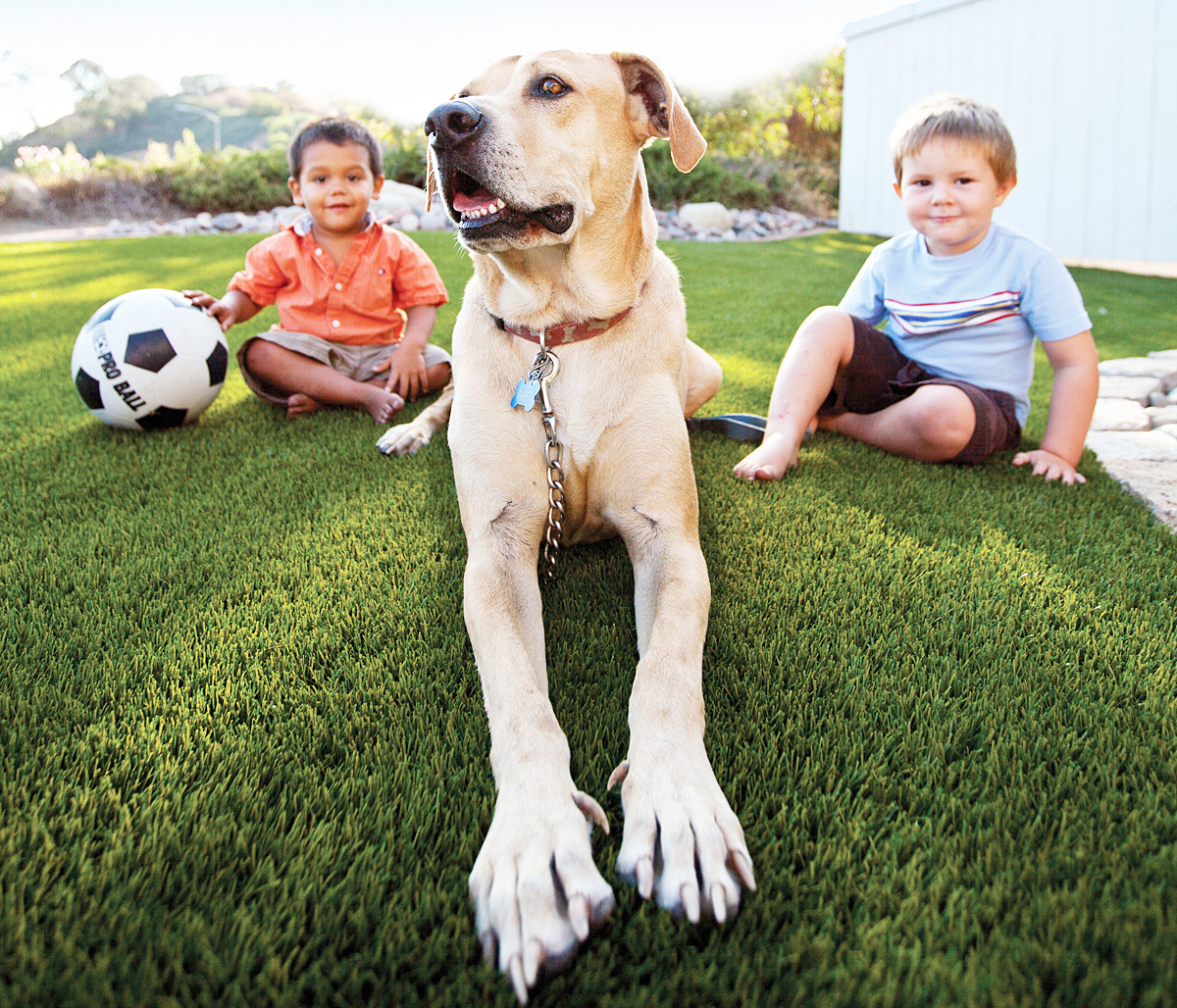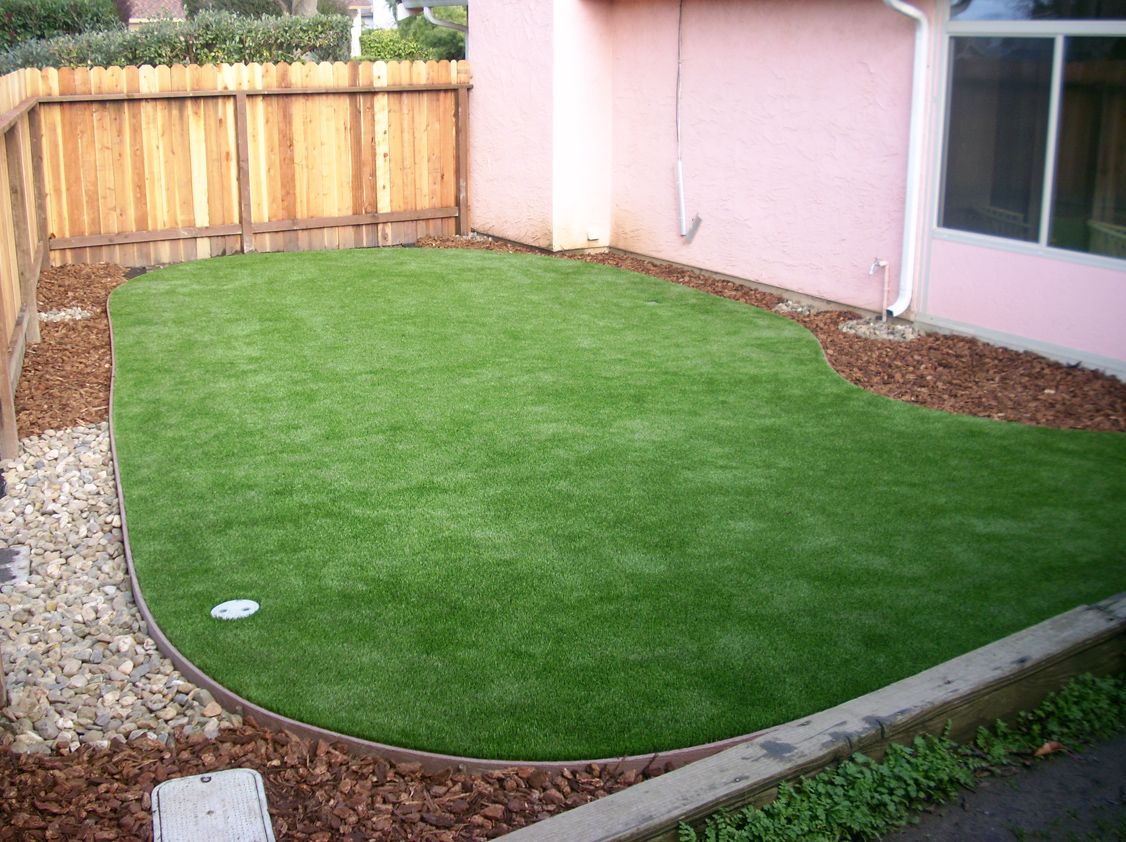How 'Green' Is Your Turf?
 |
|
Heavenly Greens |
 |
 |
|
|
Don't you just love the smell of freshly spread manure in the morning? Smells like...manure.
And the way freshly mowed grass clippings stick to your legs if you wear shorts to mow the lawn? And how about those weeds, eh? Pull 'em or poison 'em—such fun!
Or, if these aspects of lawn maintenance wouldn't make it into the lyrics in your version of 'My Favorite Things,' you may want to consider an increasingly popular alternative for landscaping your home: artificial turf.
Synthetic turf has been around for a half-century, ever since coming to the rescue of baseball's Houston Astros and their short-lived, disastrous attempt at growing grass inside their new enclosed stadium, the Astrodome. The initial version was hence called AstroTurf, version 1.0 of a product that has been improved several times over the years.
"That product has entirely changed," notes Troy Scott, vice president of marketing for San Jose-based Heavenly Greens. "They've really become a design element…because they are so customizable."
The growth of artificial turf into a $2 billion industry mostly took place on athletic fields, with 12,000-plus in the U.S. and many thousands more in Europe. The fake grass had another growth spurt starting in the early 1990s when it sprouted in and around homes, which prompted owner Dan Theis to found Heavenly Greens in 2001.
"We've seen the commercial side of our business grow continually," Scott said of businesses using artificial turf. He added that the company does not do athletic fields but does three-quarters of its work at homes: "The residential side was always strong."
"With the ever-rising water prices, people are looking for alternatives to regular lawns," explained Scott, who joined the company in 2005. Although lead content and poisoning potential was a major health concern about turf in prior decades, he said that is no longer the case: "In many circumstances, your backyard soil contains more lead than your [turf] coating, it's so minimal."
Artificial turf is made from filaments (usually polyethylene or polypropylene) threaded into a backing that promotes drainage. After the mid-'60s invention of AstroTurf by the DuPont corporation, the second generation of turf was in-filled with sand or 'crumb' rubber, primarily to make the blades stand up better. Scott explained that the newest versions of the product are 'thatched' with an additional layer to create a lusher, less crunchy surface.
"Thatch is an extra layer of stitching designed to simulate an extra layer of lawn," he said. "It is designed to be more decorative, and it's not going to get [or withstand] as much use."




